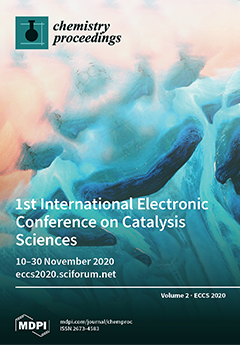In this work, FeM composites consisting of montmorillonite and variable amounts of Fe
3O
4 were successfully synthesized via a facile co-precipitation process. They were characterized using X-ray photoelectron spectroscopy (XPS), field emission scanning electron microscope (FESEM), energy dispersive X-ray spectroscopy (EDX),
[...] Read more.
In this work, FeM composites consisting of montmorillonite and variable amounts of Fe
3O
4 were successfully synthesized via a facile co-precipitation process. They were characterized using X-ray photoelectron spectroscopy (XPS), field emission scanning electron microscope (FESEM), energy dispersive X-ray spectroscopy (EDX), transmission electron microscope (TEM), N
2 adsorption-desorption, and Fourier transform infrared spectroscopy (FT-IR) techniques to explain the effect of Fe
3O
4 content on the physicochemical properties of the Fe
3O
4-montmorillonite (FeM) composites. The FeM composites were subsequently used as heterogeneous Fenton catalysts to activate green oxidant (H
2O
2) for the subsequent degradation of ofloxacin (OFL) antibiotic. The efficiency of the FeM composites was studied by varying various parameters of Fe
3O
4 loading on montmorillonite, catalyst dosage, initial solution pH, initial OFL concentration, different oxidants, H
2O
2 dosage, reaction temperature, inorganic salts, and solar irradiation. Under the conditions of 0.75 g/L FeM-10, 5 mL/L H
2O
2, and natural pH, almost 81% of 50 mg/L of OFL was removed within 120 min in the dark, while total organic carbon (TOC) reduction was about 56%. Moreover, the FeM-10 composite maintained high efficiency and was stable even after four continuous cycles, making it a promising candidate in real wastewater remediation.
Full article



